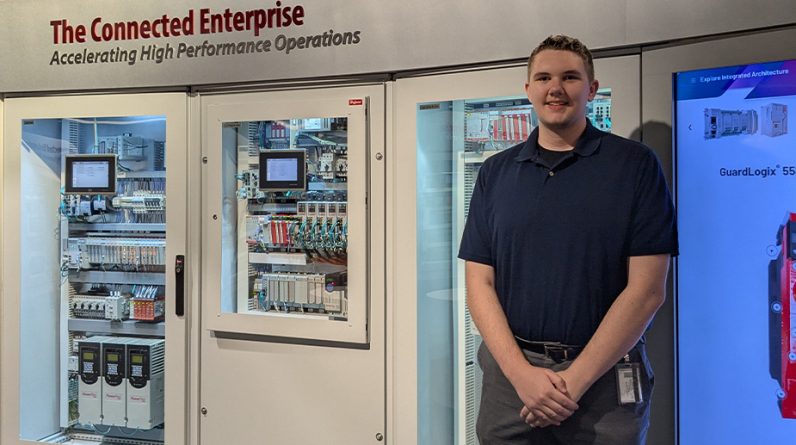The AI revolution is here, and customers already expect to benefit from the convenience it promises to deliver. Widespread interest in and acceptance of AI in all of its forms — particularly among younger shoppers — means that it’s not a matter of when customers will accept the technology but how retailers should react to it.
Even though 45% of consumers expressed a lack of understanding of how AI technology is being implemented, 75% believe there is potential for AI to have an impact on customer experience, according to a survey by RedPoint Global. Additionally, 48% of consumers would interact with AI more frequently if it would make their customer experience with a brand more seamless, consistent and convenient. The bottom line: the next step in bringing AI to the masses is delivering great execution, not basic education.
“I don’t know if it’s an education thing so much as just proving its capabilities,” said John Nash, Chief Marketing and Strategy Officer at RedPoint Global in an interview with Retail TouchPoints. “It struck me in the survey that while a lot of people didn’t understand AI, they’re actually willing to embrace it. They’re going to be more comfortable if they’re getting precise answers [from chatbots]. I think people get frustrated when things like chatbots give them incoherent answers or ones that are out of context, so that’s where the precision of what you’re putting in front of the consumer is really important.”
Some of the key ideas retailers should keep in mind as they build out their customer-facing AI capabilities include:
- AI awareness crosses generations: It’s no surprise that younger consumers are eagerly embracing retailers’ AI-powered services, but older consumers are aware of the possibilities as well, and the technology holds the potential to help retailers bolster consumers’ comfort with gathering their customer data;
- Retailers should prepare for an AI-driven future: Shoppers’ interest in AI during its infancy means the technology is poised to forever alter how retail is conducted, such as with hyper-personalized curation, and even the current naysayers are likely to become regular users as adoption rates climb; and
- Conversational chatbots are already table stakes: The days of primitive chatbots spitting out canned responses are long gone, and industry-redefining personalization capabilities along with the rise of ChatGPT will only make AI-generated content more mainstream.
Acceptance will Grow as AI Becomes Mainstream
It comes as no surprise that younger shoppers are generally more open to using chatbots and other forms of AI. Solution provider LivePerson found that the share of shoppers who feel positive about engaging with chatbots rises to 80% among those aged 18 to 24, and 60% of the younger demographic would rather engage with a chatbot than a human to find a product.
However, the data also shows that shoppers as a whole aren’t far behind, so retailers that can prove the value of AI-powered services and conversations can help their older customers discover the benefits of AI. The trick is to make sure the benefits outweigh the inconvenience of learning a new technology.
“Older shoppers want the convenience of being able to shop from their homes,” said Ruth Zive, Chief Marketing Officer at LivePerson in an interview with Retail TouchPoints. “During the pandemic they were particularly vulnerable, and even today they’re a little bit more reluctant to get out there in person and do their shopping. My 75-year-old mother is ordering groceries online. She’s learned how to do that. I think that the key is making the technology easy for them to adopt because there’s more of a learning curve. I do think they’ll continue to be laggards, but we’re certainly seeing a willingness and an appetite to learn even in that generation.”
Can AI Ease Privacy and Data Usage Concerns?
Additionally, the use of AI can help ease the concerns of shoppers who may not fully trust brands. RedPoint Global found that 54% of consumers think AI can help brands keep their personal information safer, and belief in this security impact rose to 66% among Gen Z.
“[Gen Z] view it as ‘the machine is more trust trustworthy than a human,’” said RedPoint Global’s Nash. “If I’m giving all my transaction data and behaviors to a machine, it goes into that machine, it kicks out some kind of recommendation or offer and that data just kind of disappears. It’s used for one purpose. To them, that’s a lot more secure than a call center rep or someone at the POS in a store bringing up my profile.”
Replicating that level of trust among older consumers requires retailers to give them regular, smooth experiences, which can prove that their information remains safe even when used for AI-powered interactions. They may not have younger shoppers’ inherent trust in machines, but great experiences can build it up over time.
Continued Usage will Win Over the Reluctant
Shoppers already have high expectations for how AI can improve their lives, and that is going to drive how the technology develops in the coming years. We are currently in the infancy of what the technology can do, which makes exact predictions difficult, but the retail industry is poised to change in a significant way.
“It’s sort of like asking, back in the day, ‘How is the internet going to change the shopping experience?’” said Zive. “They didn’t know and we don’t know, but I do think this is going to fundamentally change the way that people shop and interact with brands. I imagine a world where every shopper has their own personal concierge that supports them in their interactions with their favorite brands so [that] those chatbot experiences aren’t generic — they’re really tailor-made and personalized in a way that we can’t even imagine today.”
Additionally, shoppers’ remaining concerns regarding the technology are expected to become muted as they become more used to what it can do — and how it can help. Chris Beer, Data Journalist at GWI, noted AI’s parallels to social media — a sometimes controversial technology that has become an accepted part of everyday life.
“Ultimately, the economics and utility of it will win out in the end,” said Beer in an interview with Retail TouchPoints. “Once more consumers become aware of how much it can benefit them personally, through time savings or whatever else, it will become normalized. Particularly if (as seems likely) the technology continues to work on a freemium model, and integrated with Bing and Google, as there will be few barriers to entry.”
AI’s Customer Communications Roles to Blossom
Consumer acceptance of chatbots, particularly the more advanced AI-powered solutions, provide a good indicator of their comfort with the underlying technology. A majority of shoppers (62%) currently feel positive about engaging with chatbots, and 68% say that communicating with automated systems to resolve issues faster has a positive effect on their loyalty to a brand, according to a survey by LivePerson.
“I expect that consumer sentiment is going to continue to trend upwards,” said Zive. “Even just a few years ago, chatbots were very clunky. They were decision trees that were based on FAQ logic. Today they’re very much underpinned with powerful AI, and we’re seeing that evolve fast and furious — so what consumers expect today is going to be table stakes. I think that, increasingly, those expectations are going to continue to grow and they’re going to really depend on chatbots for those interactions with retailers.”
Additionally, AI will play a greater role in many of the creative aspects of retail through the use of tools like ChatGPT. However, it remains to be seen how shoppers will react to extended conversations created by advanced AI: 70% of consumers neither approve nor disapprove of the usage of synthetic media, according to a survey by GWI. The company noted that this is a sign that the average person is still on the fence about AI, as it hasn’t become relevant in their life just yet, but forecast that this is likely to change in the near future.
GWI’s Beer noted that while it’s impossible to truly predict the trajectory people’s perceptions will take, we can look at how perceptions of how earlier advances in technology evolved. He pointed to the jump from physical photo editing to Photoshop as an example, and how talented modern designers are expected to be well-versed in what was once seen as a less genuine, artisanal way of working.
“In the short term, there may be a reaction to AI-generated media that focuses on more handmade, human-designed media, which could in turn be used by brands that want to communicate those values,” said Beer. “We’ve already seen quite a lot of protests in the artistic community about AI-generated images being hosted on certain websites. There will be an effort to produce works that AI tools couldn’t, for whatever reason. But especially as time goes on, those tools will become more established and people who can use them well will be regarded as skilled in their own right. Even within the world of AI-generated media, some creations will be better than others, because some prompts are better than others, which will be based on their own experiences and understanding.”





